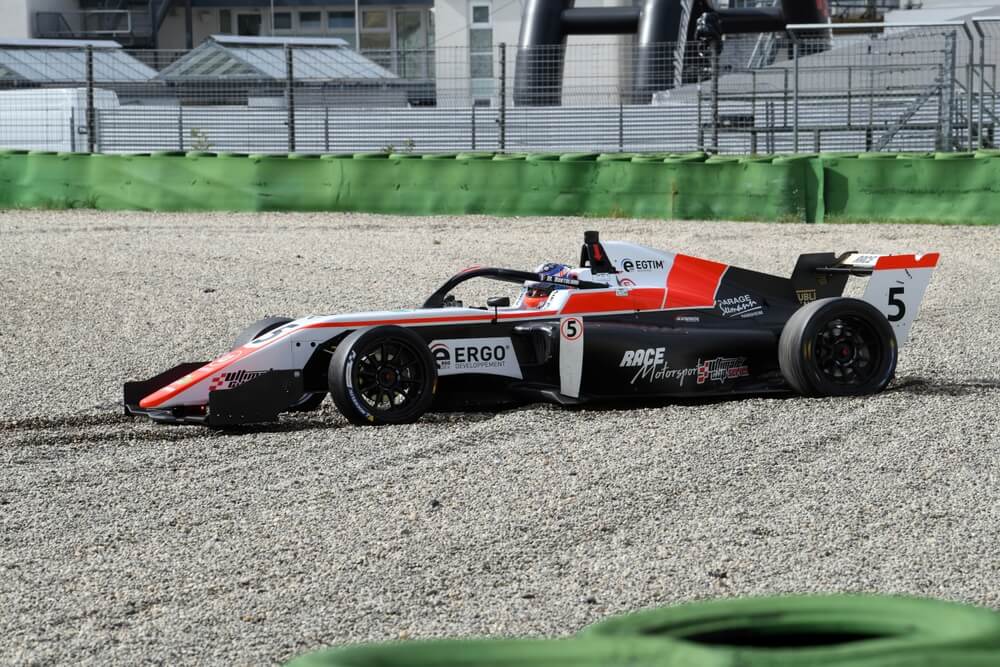You may have seen that all Formula 1 drivers gets weighed in after a race. There is several reasons why this is required, but it mainly to make sure they comply with regulations regarding their weight.
Why do F1 drivers get weighed in after a race?
F1 drivers are weighed immediately after a race is finished to make sure they comply with all regulations by FIA. All drivers need to weigh at least 80kg together with their helmet and full protective gear.
Table of Contents
There is also two more reasons, medical and technical.
- Medical Reason: It is of really importance to get to know how much a driver has lost after a race has ended so that the right measure taken. In a later article later will discuss in detail how a driver looses between 2-4kgs per race which is the amount of weight lose in a two hours race which mostly comes from sweating. The physical and medical need to be aware of this information to be able to assist the driver get this weight back up again. Obviously, by weighing themselves throughout a weekend and after sessions, drivers can find out how much weight they’ve lost, by using this number, they can adjust their training and nutrition to ensure they are in peak condition throughout the race weekend.
Driver’s weight is also key to note because if they tend to lose more weight than the usual in a race then in the next week training sessions, they are objected to less intense work out sessions compared to when they gain more weight thus more intense work out to get them to the required F1 drivers’ weight.
- Technical Reasons: The minimum weight of the F1 cars with the drivers in them in 2002 is 798kg fitted with dry -weather tyres, but without fuel which the weight limit is set by FIA. Cars are weighed after the race is over to make sure that they have not dropped below the required weight during the race. Due to improvements made on the cars in recent years cars have gotten heavier as some security features have been put. Therefore, it is a key factor to ensure that teams are not tampering with the important safety features to make their cars lighter for their advantage as they can be disqualified for the race.
Cars are weighed separately from the drivers as the drivers can be weighed faster than their cars which means that they can get started with the post-race celebrations, commitments or even interviews.
F1 drivers weight
| F1 driver | Weight |
|---|---|
| Alex Albon | 74kg |
| Lewis Hamilton | 73kg |
| Nicholas Latifi | 73kg |
| Max Verstappen | 72kg |
| George Russell | 70kg |
| Lance Stroll | 70kg |
| Pierre Gasly | 70kg |
| Valtteri Bottas | 69kg |
| Charles Leclerc | 69kg |
| Fernando Alonso | 68kg |
| Lando Norris | 68kg |
| Kevin Magnussen | 68kg |
| Mick Schumacher | 67kg |
| Esteban Ocon | 66kg |
| Daniel Ricciardo | 66kg |
| Carlos Sainz | 64kg |
| Sergio Perez | 63kg |
| Guanyu Zhou | 63kg |
| Sebastian Vettel | 62kg |
| Yuki Tsunoda | 54kg |
Average weight of Formula 1 drivers
Most F1 drivers weigh between 60kg and 75kg. Average weight of Formula 1 drivers are 67,5kg. The heaviest of all drivers is Alex Albon (74kg) while the lightest driver being Yuki Tsunoda (54kg).
Due to the high g-forces the drivers experience while racing, the impact on the body isextensive. Just like any other sport that involves intense physical exertion, the drivers sweat a lot.
However, unlike other sports where athletes wear shorts and a t-shirt and are made from a lightweight material, F1 drivers wear thick, heavy, fireproof race-suits and helmets.
The racing suits weigh around 1kg, and drivers also wear underwear, undershirts, and a balaclava made from the same fireproof material. It does stand out that many, compared to their height, do not weigh much.
Remember that drivers are great athletes who train a lot and have specific diets, so they have hardly any body fat, only muscle.
Most F1 drivers weigh between 60kg and 75kg. The heaviest of all the driver is Alex Albon (74kg) while the lightest driver being Yuki Tsunoda (54kg). Weight is an important factor in F1 so apparently all drivers weigh less than 80kg thus avoid adding extra weight every time.
In F1, the teams opt to having smaller drivers because they give numerous advantages. A lighter driver allows the teams to grow and distribute the weight of the car for its best performance. A few of the taller drivers are naturally heavier and are unable to lose any more weight than they already have.
However, it is important for drivers to maintain this weight because once the race suit (which is heavy because it is fireproof), helmet (about 1.2kg), and seat are added, a driver does not want to weigh more than 80kg. Therefore, it is important that drivers remain below 75-76kg; otherwise, they will be adding extra and unnecessary weight.
Rules regarding drivers’ weight in Formula 1
Weight is one of the most important things in the F1, the relationship between speed and weight is proportional self-explanatory.
A good example for a good understanding is if you are running with a bag full of books you will definitely run at a slower amount of speed compared to running the same distance without the bag full of books.
Relatively instead of measuring the total weight of the entire car, it was split into different areas. The first thing that would be weighed is the car as a whole. The second element is known as the “seat weight” of the car.
This “seat weight” includes the driver and all their gear as well as their seat. The seat has been included as this is where weight can be added to the driver. All drivers must be above this minimum seat weight limit, and the total minimum weight limit includes their seat weight and the weight of the car.
The same concept is used in F1, the heavier the car is the more weight the engine has power to go forward, it is very important to reduce any excess weight on the car for it to move fast. In F1 it is very important to save even the millisecond as that separates the driver’s time.
As of the Federation Internationale de I’Automobile (FIA) who are in charge of creating the sport rules have stated that the minimum weight of the driver and their seat is 80kg (176lbs) by any chance it is found that the driver weighs below that there is additional of extra weight to the car in form of ballast which increases the weight to 80kg and it’s added to the cockpit. This rule was passed in 2019 to lower having heavy and tall drivers. Previously the rule was benefiting small and light drivers.
15kg difference
For example, the weight difference between Alpha Tauri and last year’s Kimi Raikkonen was 15kgs it was an advantage for Alpha Tauri based on the fact that their driver is much smaller and therefore he was lighter thus the car having more speed. The new rules put where of assistance on the bigger drivers who had to eat a lot to remain at a competitive weight.
Many drivers agreed on this rule as they were no longer under pressure to maintain their weight loss or gain.




